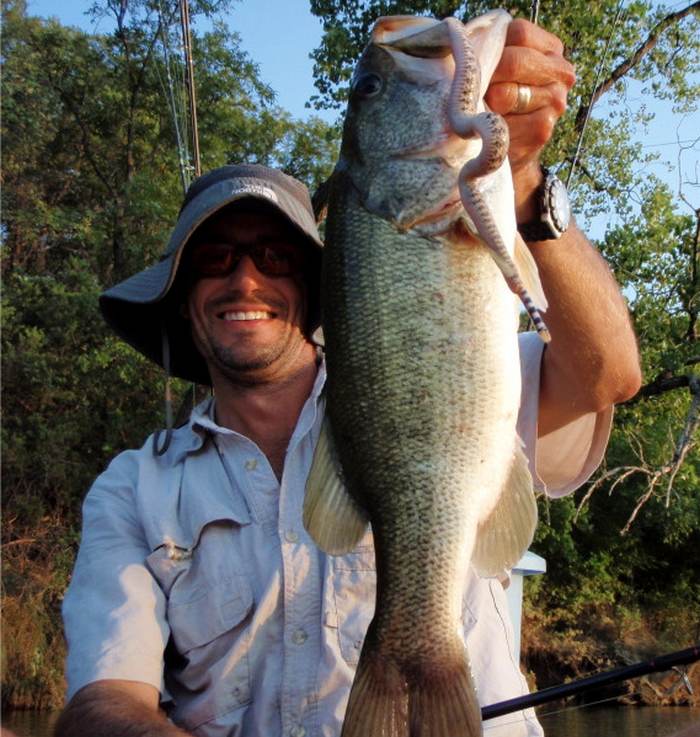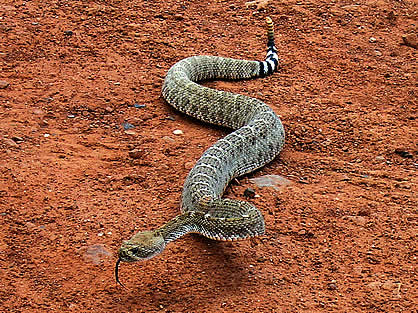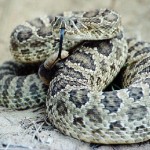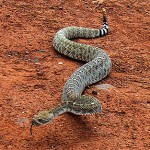
Being a fisherman, I will try just about anything to catch a big largemouth bass. Well, almost anything. I don’t think I would ever use a rattlesnake as bait, but that is exactly what Texas angler did. I got the “rattlesnake bass” story in an email. The fellow that wrote the story apparently owns or works for River Run Guide Service, but I was unable to find a Web Site for the fishing guide on the net. Anyway, if you enjoy a good fishing story, you should enjoy this one.
“Greetings to everyone from River Run Guide Service.In 20 years of fishing the Middle/Upper Brazos River, I can honestly say that I have never encountered a venomous snake (pit viper) within the riverbed. However, as I tell my clients, go outside the riverbed and that can be a very different story. Obviously, just because I have never come accross a venomous snake in the river, does not in any way mean they are not there. In fact, I always remain vigilant and on the lookout knowing that I’m simply overdue for my first encounter. The way I look at it, Texas, venomous snakes and the outdoors will always go hand in hand.
So, I wasn’t too suprised when I observed a juvenile rattlesnake headed across the river while I was in my kayak flipping a jig for bass. I continue fishing. However, I can’t help to notice the rattler has changed it’s course and is headed straight for my kayak. At this point, I’ve pretty much quit fishing and have my attention focused on the intentions of this potentially pesky pit viper. Continue reading Bass Fishing with Rattlesnake for Bait?


